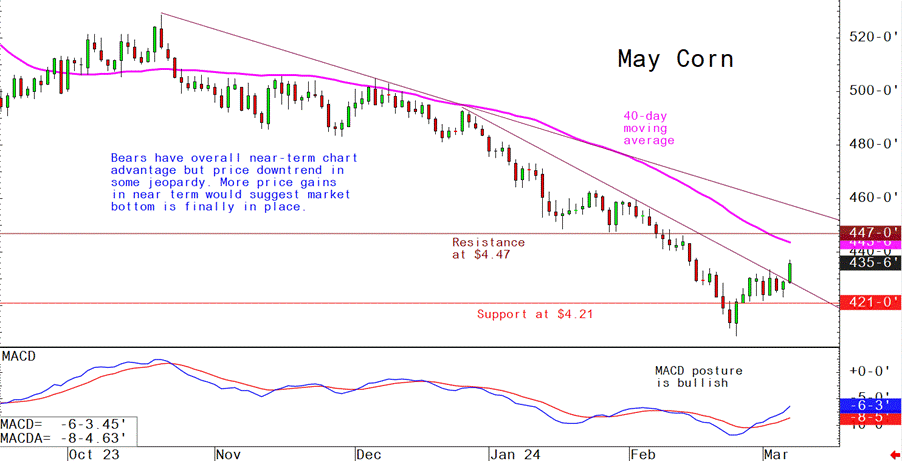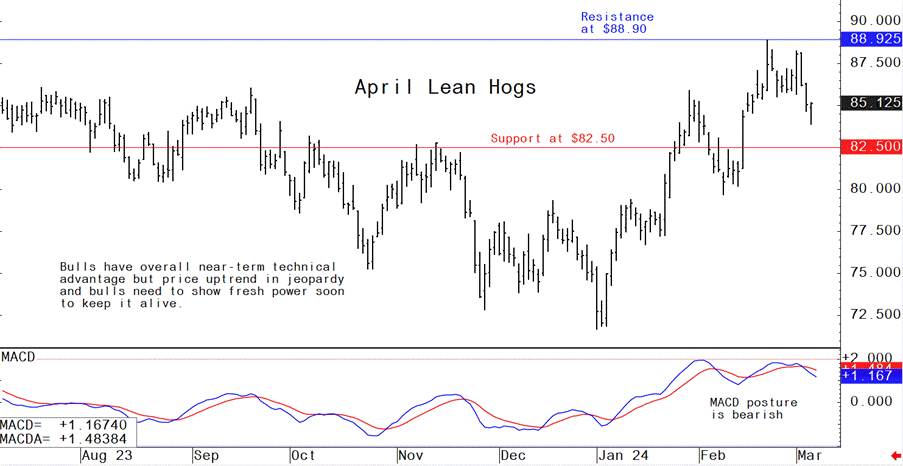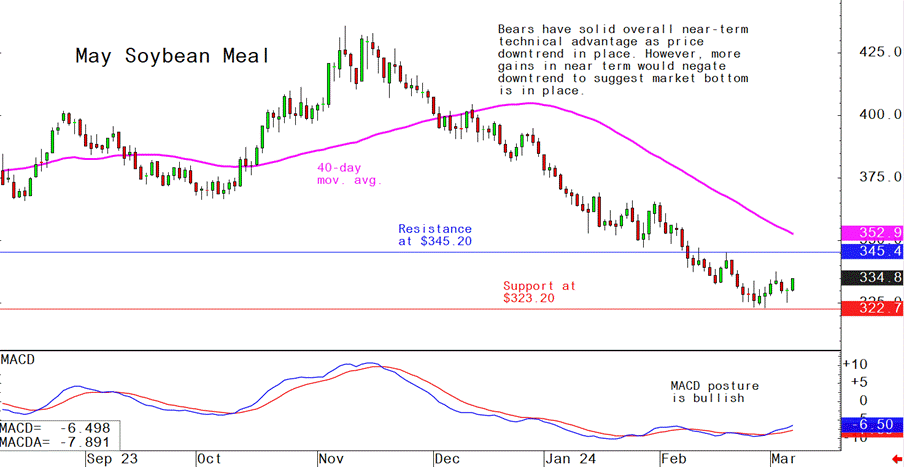



Pig outlook—Lean hog futures bulls must show fresh power soon, China sets new pig production regulations
Analyst Jim Wyckoff reports on pig news from around the globeApril lean hog futures bulls have faded this week, technically, and need to show fresh power very soon to keep alive a price uptrend on the daily bar chart. Traders continue to reduce futures premiums to the CME lean hog index, suggesting a bearish view of the hog market. The latest cash hog index is up 46 cents to $80.87 (as of Mar. 4). An early start to the grilling season due to unseasonably warm weather and an early Easter are likely to support cash market fundamentals. Fresh pork movement has recently increased, suggesting packers are using higher pork prices to reduce inventory, but retailers have supported prices by showing good demand for pork.
Animal rights groups have submitted 37,000 signatures to qualify a ballot measure in Sonoma County, California, alarming farmers.
The initiative, led by the Coalition to End Factory Farms, seeks to ban concentrated animal feeding operations. To qualify for the November ballot, they need 19,746 signatures. Supporters estimate that 50 to 60 agricultural operations in Sonoma County would be impacted, facing closure or significant operational changes. The local Farm Bureau warns of severe consequences for Sonoma and potentially other counties if similar efforts are pursued elsewhere.
China issues new regulations to control hog numbers
China issued new regulations to control the nation’s hog production capacity after an aggressive expansion of farms over the past two years led to an oversupply, a move that could reduce the size of the world’s largest pig herd. The retention of breeding sows will be dynamically adjusted according to changes in pork consumption and pig production efficiency, the ag ministry said. Regulatory measures will be triggered when the number of breeding sows rise or fall excessively to ensure a stable supply of pigs.
China last week lowered the national target for normal retention of breeding sows to 39 million from 41 million. Trivium China said, “If the number of breeding sows falls by two million in line with the lower national target, that would reduce China's pig herd size by at least 22 million, which will reshape the demand of feed grains like soybeans, corn and wheat.”
Background: China’s pig herds, which make up about half of the global total, were devastated by an outbreak of African swine fever from 2018 to 2021, leading to widespread culling, higher prices and a push for more production that in subsequent years resulted in volumes recovering to the point of overcapacity. China’s pig population was 434 million in 2023, up significantly from a low of 310 million in 2019.
Of note: Fitch, the rating agency, noted last week that “overcapacity in China’s hog breeding industry is likely to persist into the second quarter”, and that most breeders “are likely to continue facing losses.” It pointed to a “reluctance to downsize” across the market that “may partly stem from a desire to maintain their [breeders’] leading market positions and recoup previous investments.”
China lowers sow retention target
China’s ag ministry adjusted the national target for normal retention of breeding sows to 39 million from 41 million head. It also adjusted the lower limit for normal fluctuations in the stock of breeding sows to 92% from 95% of the normal retention level.
China’s meat imports decline to start 2024
China imported 1.101 MMT of meat during the first two months of 2024, down 197,000 MT (15.2%) from the same period last year. China does not break down meat imports by category in the preliminary data, though pork accounts for the bulk of incoming shipments.
The next week’s likely high-low price trading ranges:
April lean hog futures--$82.50 to $88.90 and with a sideways bias
May soybean meal futures--$315.00 to $340.00, and with a sideways-lower bias
May corn futures--$4.21 to $4.50 and a sideways-higher bias
Latest analytical daily charts lean hog, soybean meal and corn futures












